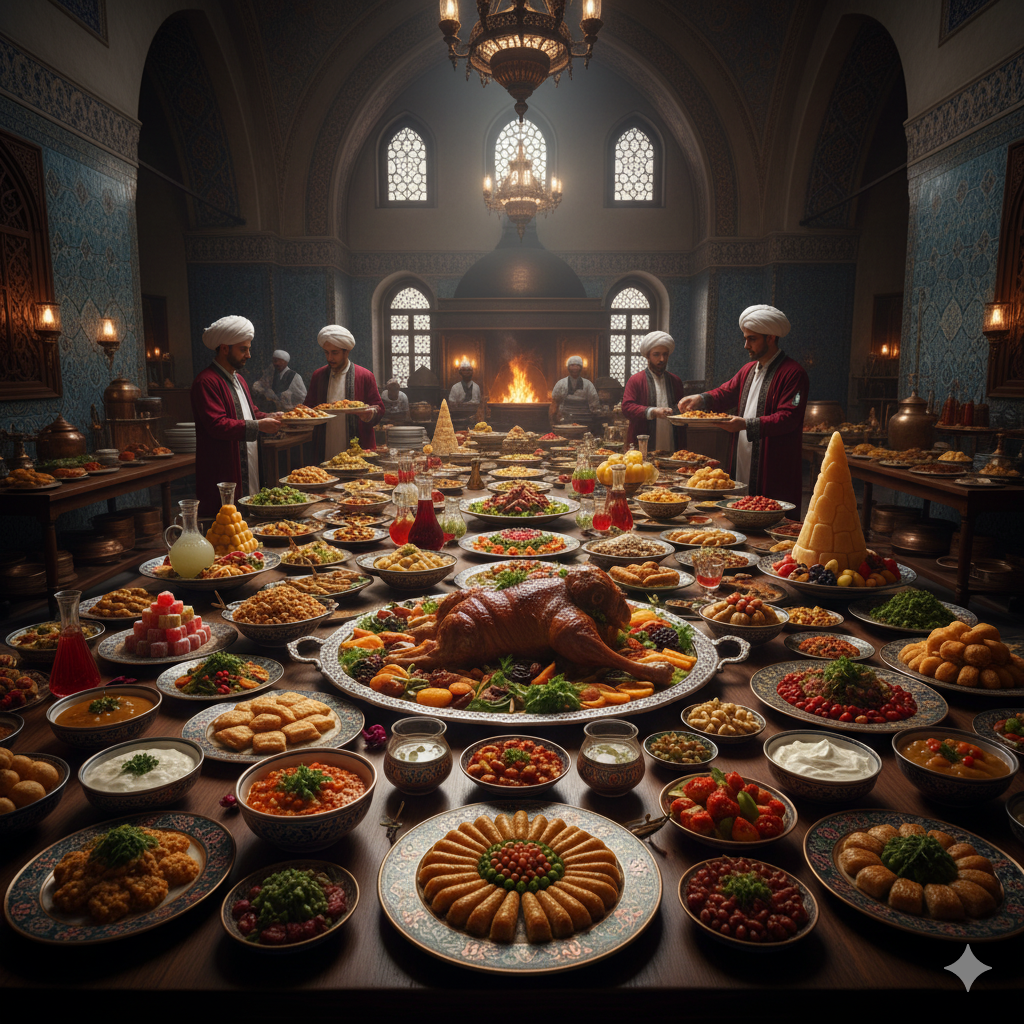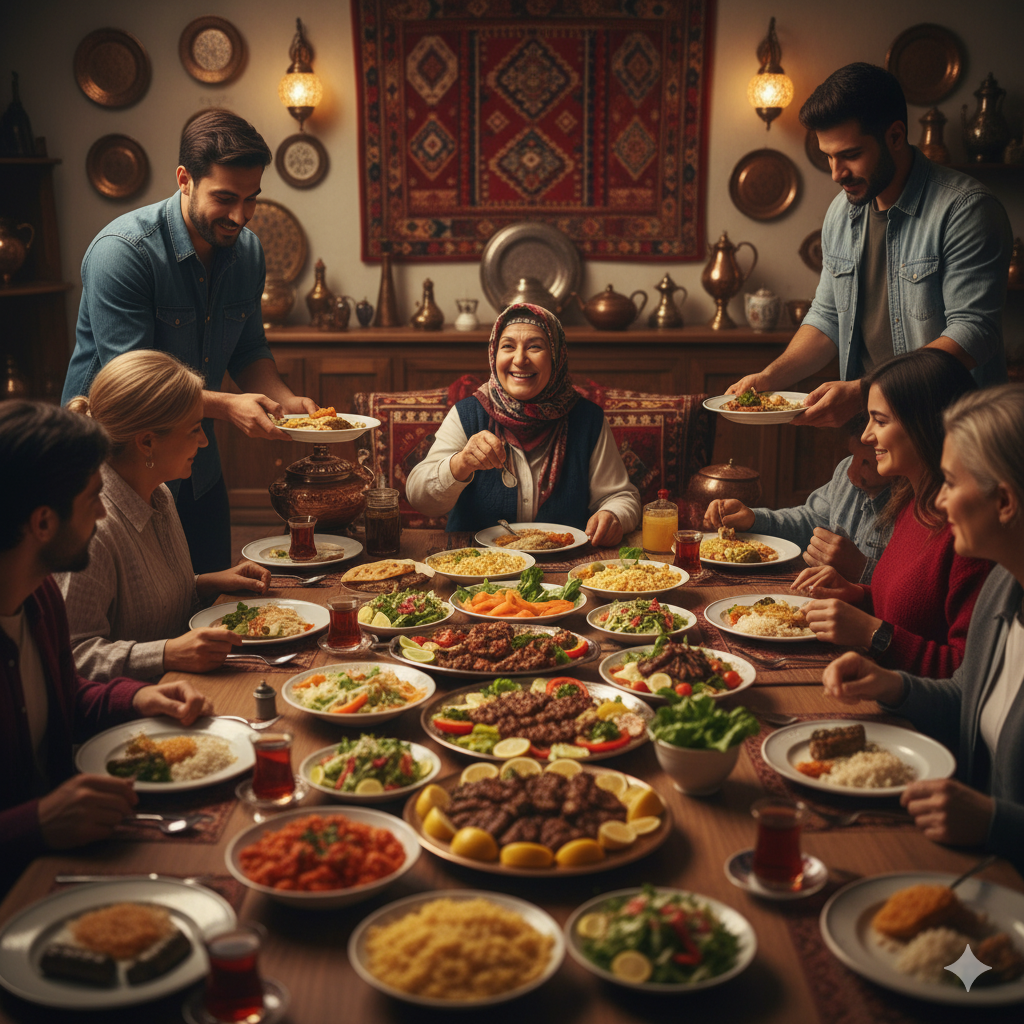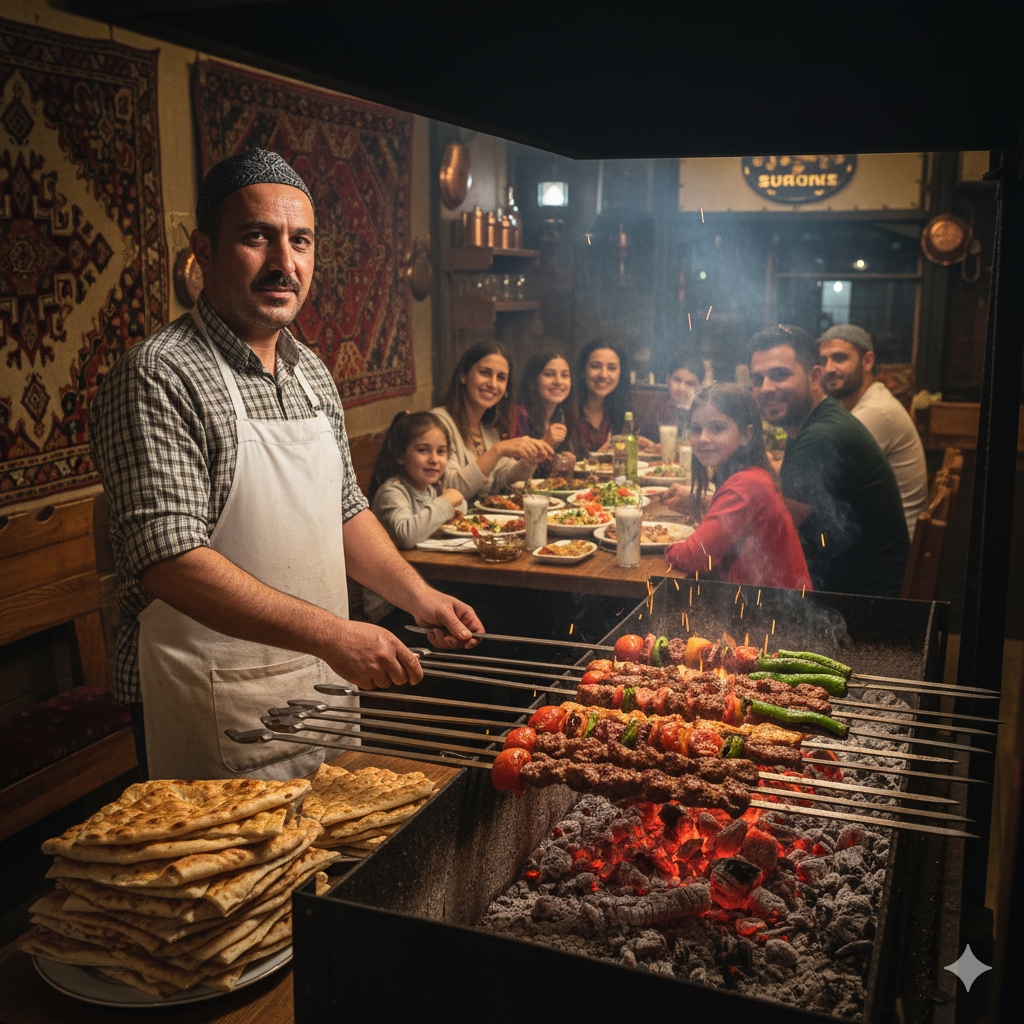The History and Culture Behind Turkish Cuisine
Turkish cuisine is not just about food—it is a reflection of history, geography, and culture. Known for its unique blend of Central Asian, Middle Eastern, Mediterranean, and Balkan influences, Turkish food is one of the richest culinary traditions in the world. Every dish tells a story, shaped by centuries of migration, trade, and cultural exchange. From the royal kitchens of the Ottoman Empire to the bustling street markets of Istanbul, Turkish cuisine continues to be a symbol of hospitality, community, and tradition.
In this article, we will explore the history and cultural roots of Turkish cuisine, tracing its journey from ancient times to the modern dining tables we see today.
1. Roots in Central Asia

The story of Turkish cuisine begins with the nomadic Turkic tribes of Central Asia.
These tribes relied heavily on livestock. so their diet was rich in meat, dairy, and grains.
Dishes like kebabs (grilled meat) and yogurt-based foods originated from these nomadic traditions.
Yogurt, in particular, became a staple and spread worldwide through Turkish influence.
Simple bread made from wheat was also a part of their daily meals, laying the foundation for Turkey’s deep love of bread today.
2. Influence of the Seljuks

When the Seljuks migrated into Anatolia (modern-day Turkey) around the 11th century, they brought their food traditions with them and mixed them with local Anatolian ingredients.
They popularized pilaf (rice dishes), stews, and the use of herbs and spices.
Turkish architecture and culture flourished under the Seljuks, and so did their culinary identity.
3. The Ottoman Empire: A Culinary Golden Age

The Ottoman Empire (1299–1922) was one of the greatest influences on Turkish cuisine. Istanbul, the empire’s capital, became a hub for trade and cultural exchange.
The Ottomans introduced lavish banquets, with a variety of meat, vegetable, and dessert dishes.
Exotic ingredients like saffron, pomegranates, almonds, and figs were integrated into daily cooking.
Meze culture (small appetizer dishes) became popular, reflecting the social and sharing nature of meals.
Desserts like baklava and Turkish delight (lokum) were perfected in Ottoman kitchens and became symbols of luxury.
The empire’s wide reach—from the Middle East to the Balkans—meant that Turkish cuisine absorbed diverse influences, making it one of the most versatile food cultures in the world.
4. Regional Diversity in Turkish Cuisine

Turkey’s geography plays a big role in shaping its food culture. Different regions developed their own unique dishes based on climate, resources, and culture.
Marmara & Istanbul Region: Famous for fish, olive oil dishes, and cosmopolitan cuisine influenced by Europe and Asia.
Aegean & Mediterranean Regions: Rich in fresh vegetables, olive oil, seafood, and herbs. Similar to Mediterranean diets, emphasizing health and balance.
Central Anatolia: Known for manti (Turkish dumplings), hearty soups, and wheat-based dishes.
Southeastern Turkey: Famous for spicy dishes, kebabs, and desserts like katmer.
Black Sea Region: Heavily influenced by seafood, especially anchovies (hamsi), and corn-based dishes.
5. Food and Turkish Hospitality

In Turkish culture, food is not only for eating—it’s a way of connecting people. Hospitality plays a central role:
Guests are always offered tea, coffee, or food as a sign of respect.
Family meals are long, social affairs where food is shared and enjoyed together.
Bread is considered sacred and should never be wasted.
This tradition of hospitality continues today, making Turkish food a true cultural experience.
6. The Role of Religion in Cuisine

Islam has influenced Turkish food in several ways:
Pork is rarely eaten, as it is prohibited in Islam.
Halal rules are followed in the preparation of meat.
Religious festivals like Ramadan bring special foods such as pide bread and güllaç (a dessert made with milk and pastry).
Food thus becomes a part of spiritual life and celebrations.
7. Modern Turkish Cuisine

Today, Turkish food is a blend of traditional recipes and modern innovations. In cities like Istanbul, Ankara, and Izmir, you’ll find a mix of:
Traditional kebab houses.

Street food vendors selling simit (sesame bread rings), dürüm (wraps), and lahmacun.
Upscale restaurants offering Ottoman-inspired fine dining.
Turkish cuisine has also spread worldwide, with Turkish restaurants and bakeries becoming popular in Europe, North America, and beyond.
Conclusion
The history and culture behind Turkish cuisine show that it is not just about taste—it is about identity, community, and tradition. From the nomadic tribes of Central Asia to the grandeur of the Ottoman palaces, Turkish food has traveled across centuries and continents, constantly evolving while staying true to its roots.
Whether it’s a simple cup of Turkish tea, a plate of kebabs, or a sweet piece of baklava, every bite carries the story of a nation’s journey. That’s why Turkish cuisine remains one of the most celebrated food cultures in the world.

